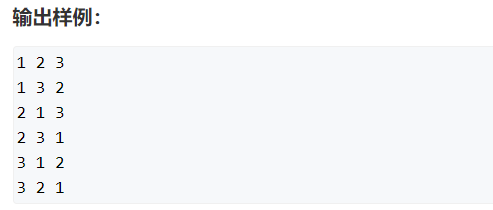

方法一:c++自带的next_permutation函数
1 #include <bits/stdc++.h> 2 using namespace std; 3 int a[15]; 4 int main() { 5 int n; 6 cin >> n; 7 for (int i = 0; i < n; i++) { 8 a[i] = i + 1; 9 } 10 sort(a, a + n); 11 do { 12 for (int i = 0; i < n; i++) { 13 cout << a[i] << " "; 14 } 15 cout << endl; 16 } while(next_permutation(a, a + n)); 17 return 0; 18 }
方法二:dfs。搜索顺序:从前往后遍历每个位置,判断这个位置放哪个数
1 #include <bits/stdc++.h> 2 using namespace std; 3 const int N = 15; 4 int way[N]; //存储每种方案 5 bool used[N]; //判断每个数有没有被用过,true表示用过,false没用过 6 int n; 7 void dfs(int u) { 8 if (u == n + 1) { 9 for (int i = 1; i <= n; i++) { //打印方案 10 cout << way[i] << " "; 11 } 12 cout << endl; 13 return; 14 } 15 //依次枚举每个分支,即当前位置可以放哪些数 16 for (int i = 1; i <= n; i++) { //从小到大 17 if (!used[i]) { //找一个没用过的数 18 way[u] = i; //放在u这个位置 19 used[i] = true; //i这个数用过了 20 dfs(u + 1); //搜索下一层 21 way[u] = 0; //回溯回复现场 22 used[i] = false; 23 } 24 } 25 } 26 int main() { 27 cin >> n; 28 dfs(1); //从第一位开始 29 return 0; 30 }